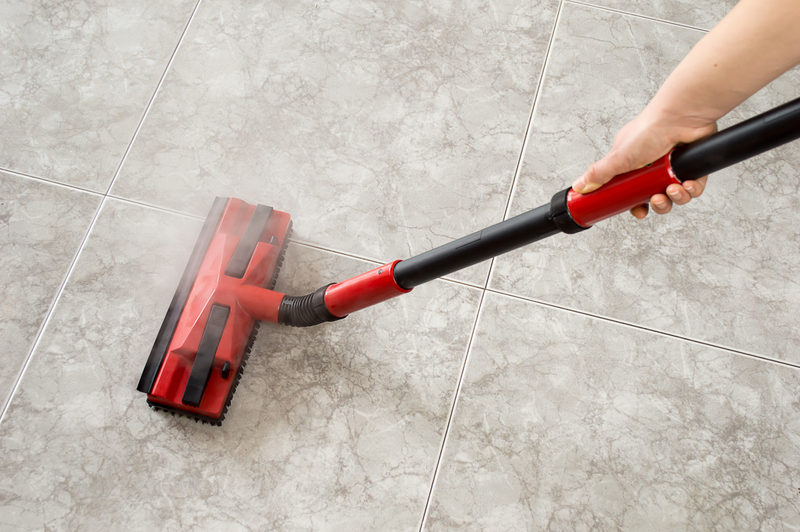Revitalize Your Space: How to Clean Curtains Effectively
Posted on 25/06/2025
Revitalize Your Space: How to Clean Curtains Effectively
Refreshing your home's appearance doesn't always call for an extensive renovation. Sometimes, the secret lies in the details - like crisp, clean curtains! Whether they're framing your windows in the living room, acting as privacy barriers in your bedroom, or adding flair to your kitchen, curtains gather dust, odors, and allergens over time. Learning how to clean curtains effectively not only improves your space's air quality but also instantly revitalizes your rooms.
Why Should You Clean Your Curtains?
Many homeowners underestimate how much dirt and allergens curtains can harbor. Over time, they accumulate:
- Dust and pet dander
- Cooking smells and smoke
- Pollen and molds
- General stains and spots
Unclean curtains can affect indoor air quality, cause lingering odors, and even worsen allergies. Regularly cleaning curtains enhances the fabric's colors and texture, ensuring they remain as stunning as when you first hung them.

How Often Should You Clean Curtains?
Most experts recommend a general curtain cleaning every three to six months. However, if you live with pets, cook frequently, or have allergies, consider cleaning them more often.
- Lightweight or sheer curtains: Every 2-3 months
- Heavier drapes or lined curtains: Twice a year
- Kitchen or bathroom curtains: At least every 3 months due to higher exposure to moisture and odors
Remember: Regular dusting or vacuuming can help keep your curtains looking fresh between full washes.
Understanding Your Curtain Fabric
Before jumping into curtain cleaning, identify your curtain's material. Different fabrics require different cleaning methods, so always check the care label. Here are common types:
- Cotton and linen: Usually machine washable, but may shrink if hot water is used
- Polyester: Durable and often safe for machine washing
- Velvet, silk, or brocade: Often require professional dry cleaning
- Sheer or lace: Delicate - gentle hand washing or using a mesh bag in a gentle cycle is best
If in doubt, always err on the side of caution and opt for mild cleaning methods to avoid damaging your curtains.
Essential Tools and Supplies for Curtain Cleaning
To effectively clean your curtains, gather the following:
- Vacuum cleaner with brush and upholstery attachments
- Mild laundry detergent
- White vinegar or baking soda for odor removal
- Soft sponge or cloth
- Steamer (optional) for delicate or dry-clean-only drapes
- Lint roller for pet hair removal
- Ladder or sturdy chair for safe access
Step-by-Step Guide: How to Clean Curtains at Home
1. Preparation: Remove Dust and Debris
- Start by vacuuming your curtains from top to bottom. Use the upholstery attachment and pay special attention to pleats and folds.
- For stubborn pet hair or lint, go over the fabric with a lint roller.
- Check for stains or discoloration and spot-clean these areas first.
2. Spot Cleaning Curtain Stains
For small, stubborn spots:
- Mix a little mild detergent with water.
- Dab the stain gently with a soft cloth, working from the outside in.
- Rinse with a clean, damp cloth.
- Avoid wetting the curtain excessively to prevent watermarks or shrinking.
3. Machine Washing Curtains: Tips and Precautions
- Remove all hardware, hooks, and weights from your curtains to prevent snags.
- Place curtains in a mesh bag or pillowcase for extra protection, especially for sheers.
- Use a gentle cycle with cold water and mild detergent.
- Avoid bleach, which can fade and weaken the fabric.
- After washing, hang curtains while still damp to reduce wrinkles and allow them to air dry fully.
Tip: Never wring out your curtains, as this can cause distortion and wrinkling.
4. Hand Washing Curtains: When and How
- Fill a bath or large basin with cold or lukewarm water and add a small amount of detergent.
- Submerge the curtains and gently agitate.
- Let them soak for 10-15 minutes if heavily soiled.
- Drain and rinse thoroughly with clean water until no suds remain.
- Gently squeeze out excess water and hang to dry.
5. Steam Cleaning Curtains
- Ideal for heavier, lined, or dry-clean-only curtains.
- Use a steam cleaner following manufacturer instructions, holding the device a few inches from the fabric.
- Work from the top down, ensuring even coverage.
Steam cleaning is especially effective for removing odors, bacteria, and dust mites without taking down the curtains.
6. Dry Cleaning: When Is It Necessary?
- If the label says "dry clean only", follow the instructions strictly.
- Take delicate fabrics like silk, velvet, wool, or intricate embroidered curtains to a professional cleaner.
- Inform the cleaner about any specific stains or materials.
7. Drying and Ironing Curtains
- Air drying is safest; avoid direct sunlight, which can fade fabric.
- Hang curtains on a sturdy rod or washing line - smooth out wrinkles by hand as they dry.
- Use a low-heat iron for stubborn wrinkles, or a steamer for gentle wrinkle release.
Specialized Curtain Cleaning Tips
How to Clean Curtain Linings
- Lining fabrics may require special care as they could differ from the outer curtain fabric.
- If detachable, clean them separately, following their specific care instructions.
- If sewn-in, use spot cleaning or steam cleaning methods.
How to Remove Mildew from Curtains
- Take curtains down and shake them outside.
- Prepare a solution of water and white vinegar (1:1 ratio).
- Apply to affected areas with a sponge and scrub gently.
- Machine wash or hand wash if the fabric permits.
- Dry thoroughly in a well-ventilated area to prevent mold recurrence.
Cleaning Blackout Curtains
- Blackout linings can degrade if laundered frequently.
- Regularly vacuum and spot clean.
- For deep cleaning, follow the manufacturer's instructions strictly, as some may require only gentle hand washing or professional cleaning.
How to Maintain Clean Curtains Year-Round
Keep your curtains cleaner, longer, with these habits:
- Vacuum weekly - prevents dust and dander buildup.
- Open windows when weather allows to reduce moisture and odor penetration.
- Deodorize with baking soda - sprinkle lightly on dry curtains, wait 15 minutes, and vacuum off.
- Address stains swiftly to keep them from setting.
- Avoid smoking indoors to prevent residue and odors in fabric.
- Rotate curtains annually (if double sets) to prolong their lifespan and maintain even exposure to sunlight.
Common Mistakes to Avoid When Cleaning Curtains
- Skipping the care label: Always read instructions to avoid permanent damage.
- Using harsh chemicals: Bleach and strong detergents can weaken or discolor fabrics.
- Ironing on high heat: Can scorch or melt delicate materials.
- Drying in direct sunlight: Might cause fading, especially in richly colored or delicate textiles.
- Re-hanging wet curtains without proper support: Can stretch or leave marks.
The Benefits of Clean Curtains in Your Home
- Brighter, fresher spaces: Clean curtains reflect light, making rooms feel more inviting.
- Improved air quality: Reduces allergens and lingering odors.
- Extended curtain life: Routine cleaning maintains fabric strength and color.
- Healthier environment: Reduces allergens and the risk of mold and mildew.

Frequently Asked Questions About Curtain Cleaning
Can you wash curtains in the washing machine?
Most lightweight and medium-weight curtains can be machine washed on a gentle cycle with cold water. However, always check the care label and don't wash delicate or specialty fabrics this way.
Can you vacuum curtains?
Yes! Vacuuming is one of the best ways to keep curtains free of dust and allergens between deep cleans. Use the soft brush attachment for best results.
Should you iron curtains after washing?
Ironing can help eliminate wrinkles, but only use the recommended heat setting for your particular fabric. A steamer is a safer choice for delicate drapes.
How do you clean curtains without taking them down?
Vacuuming, spot cleaning, or using a handheld garment steamer can refresh curtains without the hassle of removal.
How can you prevent curtains from fading?
Protect curtains by using sheers behind heavy drapes, avoid prolonged direct sunlight, and occasionally rotate your curtains if possible. Always air dry out of the sun after washing.
Conclusion: A Fresh Start for Your Space
Learning how to clean curtains effectively is one of the simplest, most impactful ways to breathe new life into your living spaces. Clean curtains brighten a room, improve air quality, and enhance the longevity of the fabric. A little regular care, attention to fabric type, and proper cleaning techniques go a long way toward keeping your home healthy and beautiful. So, take a look at your windows and revitalize your space with sparkling clean curtains - you'll be amazed at the transformation!
Ready for your next home refresh? Start with your curtains and let the positive change ripple through your entire space.



.png)